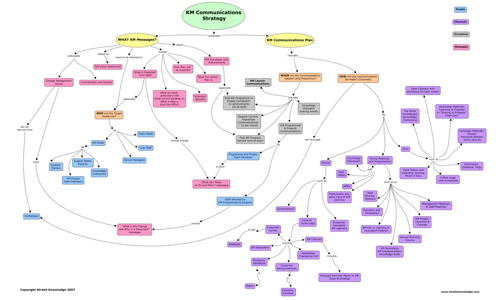Sep 27
Could a CoP Become a Gang
I have just watched an episode of “Get Real” on Channel News Asia where this week’s feature was on teenage gangs. It was most disturbing to hear of how easily members could sign up with a gang but how difficult and life-threatening it could be to get out.
Sep 25
The Comedy of Crowds
I can’t believe this has been going since July and I have only heard about it now. I always was slow in catching viruses.
Where are the Joneses is a Web 2.0 comedy series comprising a blog, a wiki and a Youtube comedy series featuring Dawn, who has just discovered that she is the product of artificial insemination, and has 27 siblings scattered across Europe. She sets off in search of them, dragging the odd sibling along with her.
The drama evolves as the viewing community contributes ideas and suggestions, making decisions about where Dawn goes next. It’s Forum Theatre Web 2.0 style, with a professional cast and crew to build it into a great – and disturbingly addictive – show. Oh, and it’s funded by Ford, who presumably supplied the spanking new car that Dawn crosses Europe in. Advertising 3.0, evidently.
It’s also a great example of one of the productive applications of the wisdom of crowds idea. Crowds are great for generating ideas and diversity as with the Joneses, distributing tasks to be completed in parallel, and if fuelled by a rush of extreme sentiment, are also capable of revolutions (wisdom does not always come into play here). It’s important to know about what makes crowd wisdom tick, because not all crowds are really crowds, and crowds can also be dumb as over-ethusiasts have discovered to their chagrin.
But as Andrew McAfee recently reminded us in recounting a bizarre experiment, while crowds may be able to coordinate sufficiently well to fly a plane together, they are not very good at landing it. McAfee quotes from Kevin Kelly: “”But group mind seems to be a liability in the decisive moments of touchdown, where there is no room for averages.”
Wisdom of crowds is important to us because in our consulting work we use emergent methods (largely developed by Dave Snowden and his Cognitive Edge network) to pull out the perceptions, ideas and patterns from the “crowd” of the organisation. But at some point this has to be harnessed and focused toward decision and action. This is where the need for a strong professional crew comes in, and the real lesson of Where are the Joneses for me. Thanks to Sebastian Mary for this link.
Sep 24
How to Plan a KM Communications Strategy

This concept map catalogues all the elements of a KM communications strategy that we’ve found useful, with some ideas for messages, media and audiences. Download the pdf version formatted for A3 size printing for easier reading!
Sep 23
Facets and Tags
More posts on tackling perceptions of facets and visualising tagging patterns over at the book blog.

Sep 23
On the Importance of Being Smooth
This short video has something disturbingly primal (not to mention Oedipal) behind the whimsy. It’s clearly a metaphor for the generational and power divides within our organisations, where “being smooth” relates to the adoption of Web 2.0 tools. That’s my story and I’m sticking to it. Thanks for the link Clive.
Sep 21
The Prehistory of Knowledge Management
The actKM Forum has been discussing the origins of the phrase “knowledge management” (thanks Awie) – the consensus seems to be building that the emergence of the term can be attributed to Karl Wiig and his colleagues in the early 1980s.
However, digging around in the Prelinger Archive, I found this little gem, an industrial film from around 1960 in classic triumphalist mode, clearly demonstrating that KM was being touted as a management fad a whole generation before Karl Wiig’s work.
Sep 20
On Being Ephemeral

This haunting photograph has surfaced on a number of blogs in my reader recently (along with other photographs, equally beautiful). It’s the Library of the Abbey of Saint-Gallen and it’s by Candida Hofer. Many of her photographs of libraries are empty, static, and serene. In this one, I think what makes it so powerful is that the people themselves seem fleeting and ephemeral, while the printed books, and the library itself, seem solid, durable and lasting. It’s an illusion in lots of ways, more beautiful libraries of that age have been lost than have been sustained, but it’s a powerful, attractive illusion nonetheless.
Sep 17
Investing in Competencies for Knowledge Management
I’ve been thinking a lot about KM as a profession (or proto-profession). I’m speaking on this topic at the actKM annual conference in Canberra next month, and at the iKMS KM Singapore conference in early November. So I’ve put a short survey up on the web (shouldn’t take more than ten minutes) to try to get a sense of how much organisations actually invest in KM competencies. So far we are getting responses from Australia, Singapore and the USA, which should make for interesting comparisons. I’ll post the results here in November. Try it!

Sep 17
The Kingdom of Taxonomy on Video
Back in February I blogged a map of the “Kingdom of Taxonomy” – this is now turned into a video presentation over at my book blog, created specially for the SIKM Leaders Forum this month. Enjoy.
Sep 14
Taxonomies on Video
Visit my taxonomy blog over at http://www.organisingknowledge.com to see some great video podcasts by Joseph Busch and Dave Clarke on creating and managing taxonomies.

